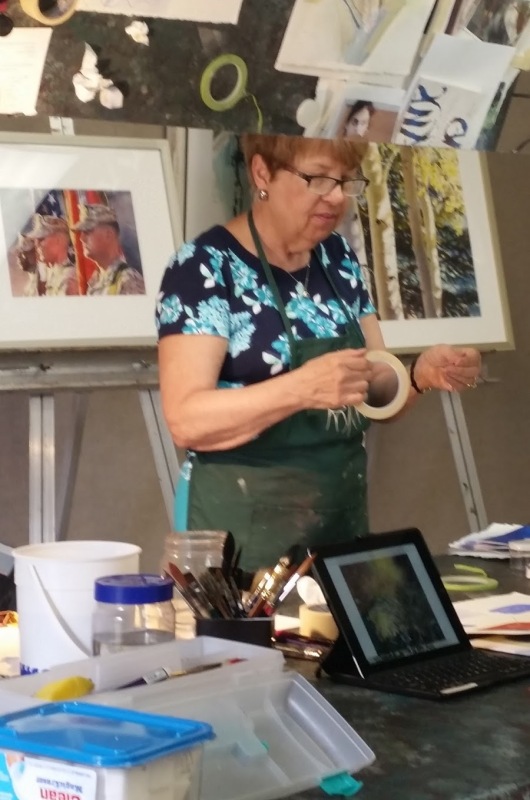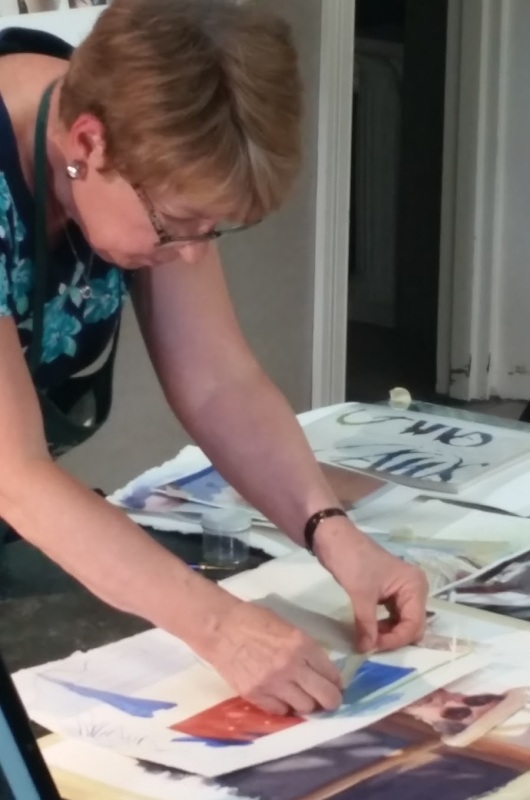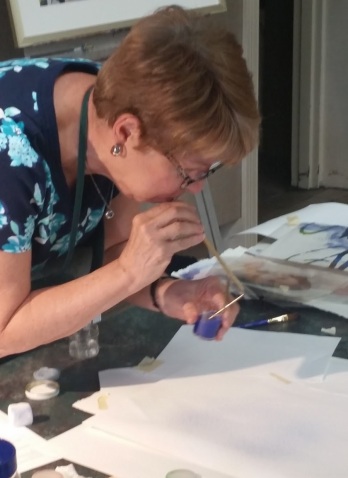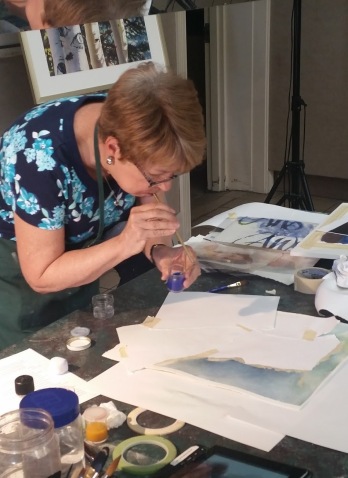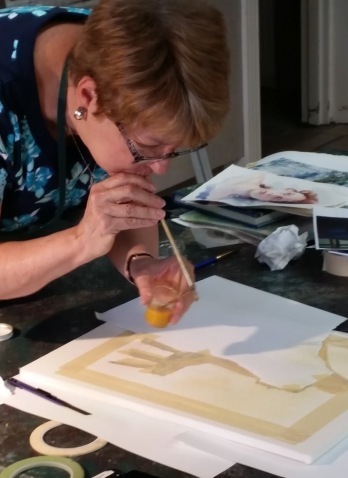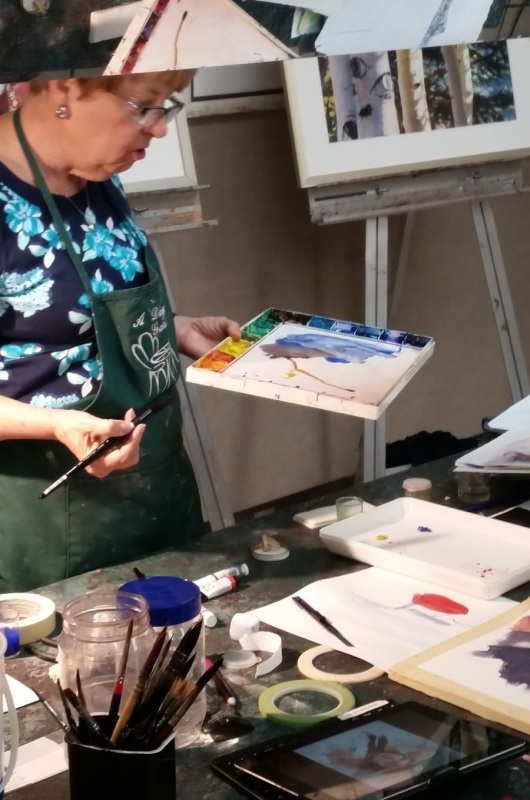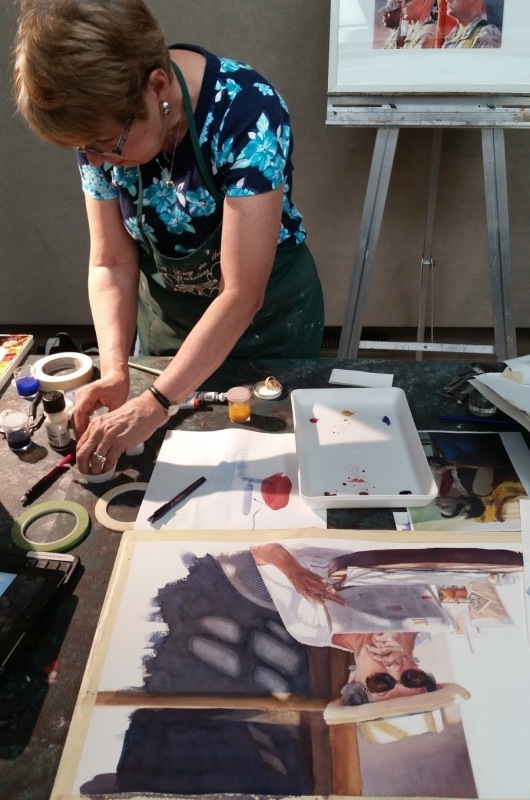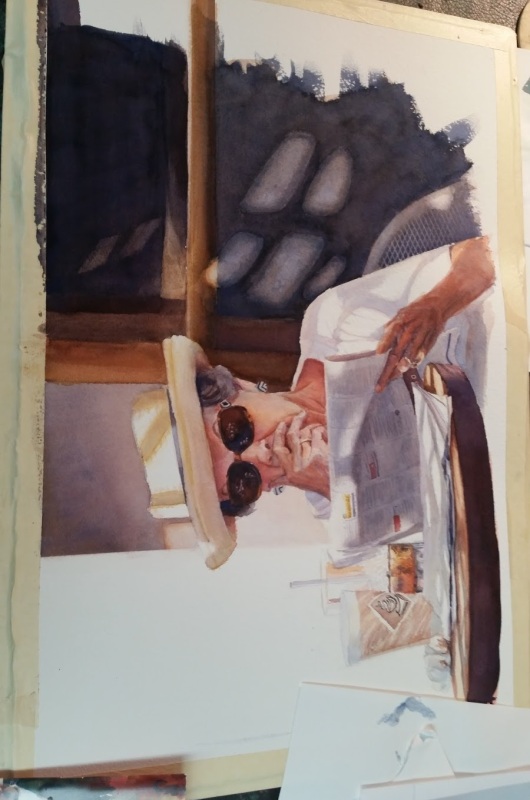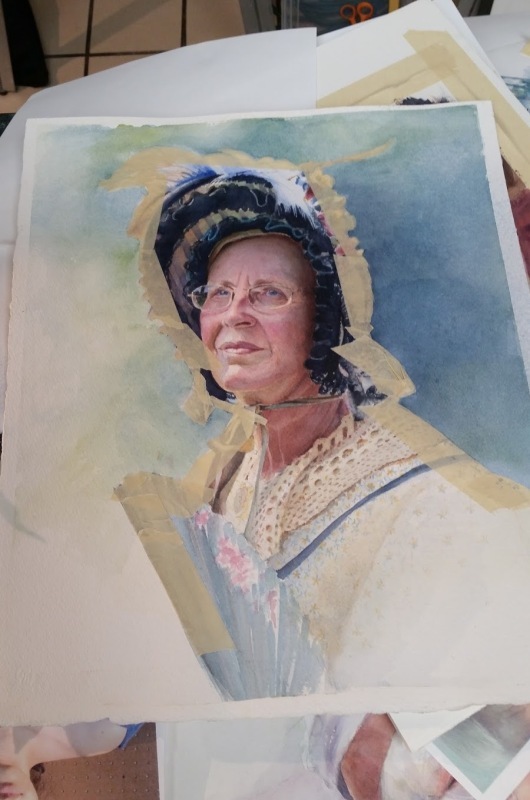PROGRAM - JUNE 7, 2017
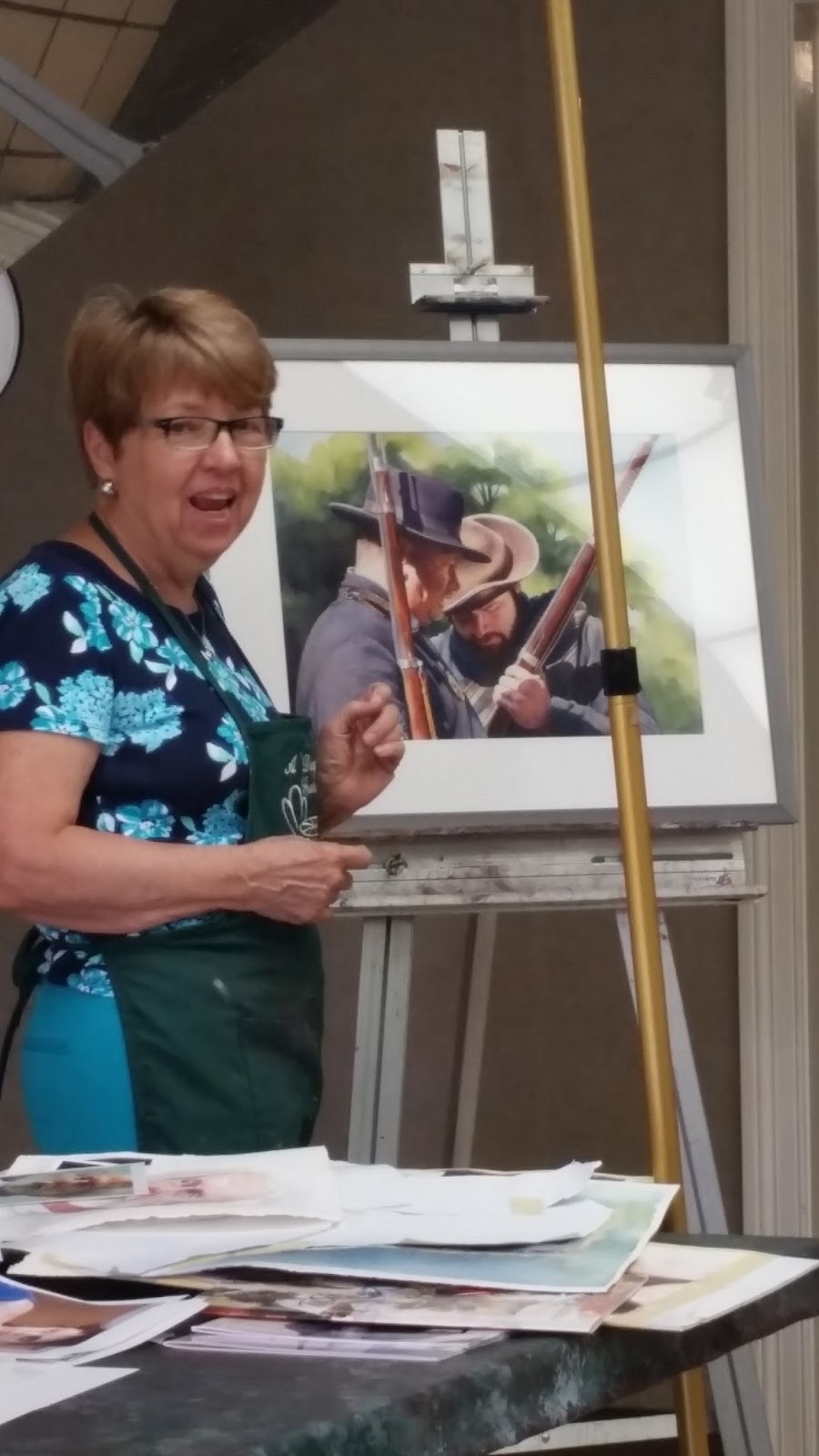
In the absence of our Program Chair, Claudia Taylor, Tom Schroeder introduced our June program presenter, Heidi Hanssen.
Heidi has a BFA Cum Laude from Ohio Wesleyan University and a MA in Art Education from Indiana University. Even before her formal studies, Heidi has always had a keen interest in art. After a career in teaching, sharing this interest with her students, Heidi is pursuing her dream of being a full-time artist. She has chosen to develop her skills further in watercolor by attending workshops taught be accomplished watercolorists.
Heidi has shown her paintings at the Transparent Watercolor Society International Show, Ohio Watercolor Society and the Viewpoint Show, twice winning awards. Most recently she won first award at the Cincinnati Woman’s Art Club Annual Show. She is a Signature member of the Cincinnati Art Club and the Women’s Art Club.
Heidi has also worked in ceramics. She stated that at one point she painted a painting for her husband and then decided to take classes from Ken Buck, which rekindled her interest in painting again.
Heidi has taken workshops from John Salminen, from Duluth, Minnesota; Mary Whyte from Charleston, South Carolina and Janet Rogers of Ormond Beach, Florida.
From each instructor, she has learned tips of using a variety of tools and techniques that she shared with us.
John Salminen equipment tips and techniques:
· Masking tape can be the cheap, basic kind from a hardware store. Only use on dry, unpainted white paper. If used on painted areas, additional paint can leach through the edges. It is better to dry brush against the edge. It can also be cut like a stencil. Heidi demonstrated how thin lines can be masked and the color scrubbed off;
· John recommends using a thin, snap-off blade knife to delicately cut fine and curved lines out of the masking tape without cutting the paper;
· Magic Eraser by Mr. Clean works very well to lift color from watercolor paper. Color should be scrubbed gently as needed to remove color. Heidi passed out samples to the Club members;
· John uses a mouth atomizer, which acts as a low tech airbrush to apply watercolor in a fine mist to areas of the painting. They can be sourced on Cheap Joes or Amazon.
Other tools:
· Janet Rogers recommended Loew Cornell brushes. They keep a long point and have a good snap and are reasonably priced.
· Heidi suggests buying big soft brushes, such as Silver Brushes or Princeton synthetic squirrel brushes. She has also started using larger mop brushes to hold more paint and allow for thin line application. She has also used Escoda and Danube brushes.
· Heidi likes to use a small fan brush to paint fine lines to soften an edge.
· She also uses flat brushes to lift paint along an edge.
· Heidi demonstrated how ruling pens can be used very effectively for applying masking fluid provides thin lines.
· Heidi uses value cards to compare values of colors against each other as well as understanding values from reference pictures. She also uses a punched white card to assist the comparison of a color to a value against the white of the card.
· Mary Whyte recommended use of Gator Board for painting surface, for resistance to water, light weight and cost.
· Automotive tape can be used for masking fine lines.
· Clear Wet Media Film can be used to overlay a painting and experiment with wash tones to work out next steps of a painting.
Some lessons learned from the workshops about painting and process:
· Backgrounds should be painted first to set the tone or lighting mood for the foreground subject. Backgrounds can also be very light, partial gestural or dark.
John Salminen
· In urban street scenes, chose an idea that conveys depth;
· Skies are comprised of more than one color, borrowed from the palette of the landscape;
· John likes to paint wet surfaces. For wet streets, remember it acts like a mirror so reverse the image top to bottom, not side to side;
· Mix up large amounts of color for washes;
· Uses a mouth atomizer for textural treatment;
· He uses a great variety of tinted overlays to help determine how to wash or atomize the tone of an area.
Janet Rodgers
· Uses blotches of color areas in overlay fashion;
· Create several warm and cool color mixtures and use them together, mixing on the paper;
· Practice making interesting color mixes on scrap paper;
· Use shapes of the background as a “gesture” to highlight the colors of the figure;
· Likes Lowell Cornell brushes, longer tip and stiff;
· Emphasized working on scraps of paper for color mixes of skin tones.
Mary Whyte portraiture is big inspiration for techniques.
· Loves to use hats on figures, casts shadows, anchors faces
· Mary uses Perylene Maroon as one of her favorite colors;
· Paint skin warm skin tones and then overlay with cool shadows;
· Avoid symmetry;
· Work on background as you paint figure.
Heidi also pointed out that the internet is a great source of references and blogs for inspiration. A couple of her favorite blogs are:
· Gurney Journey
· Seamless Expressions
She also stated that all of the national and regional society shows display the winning paintings on their individual websites for study.
Heidi was a great source of ideas, techniques and process, giving us much to review and practice in our own work.
Heidi concluded her program with a review and critique of Club member paintings.
For our next Greater Cincinnati Watercolor Society meeting on July 5th, we will be hosting Ken Buck in an evening meeting. The meeting will start with a Potluck dinner followed by the program at 7:00. See you then.
Submitted by Tom Schroeder, Secretary, Greater Cincinnati Watercolor Society, June 2017.

